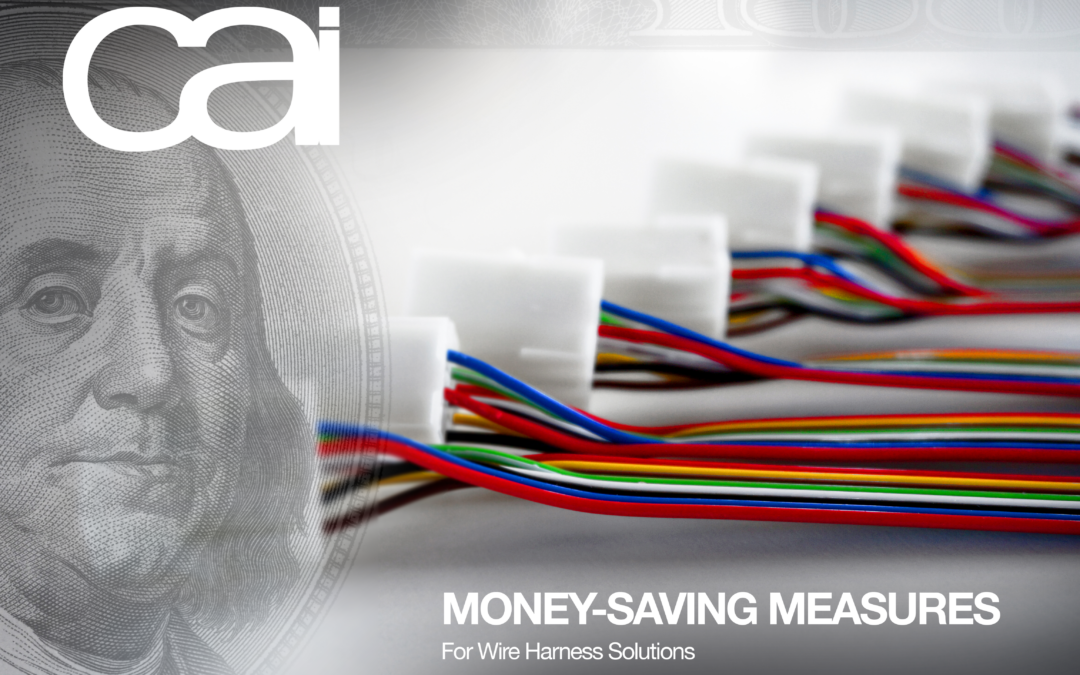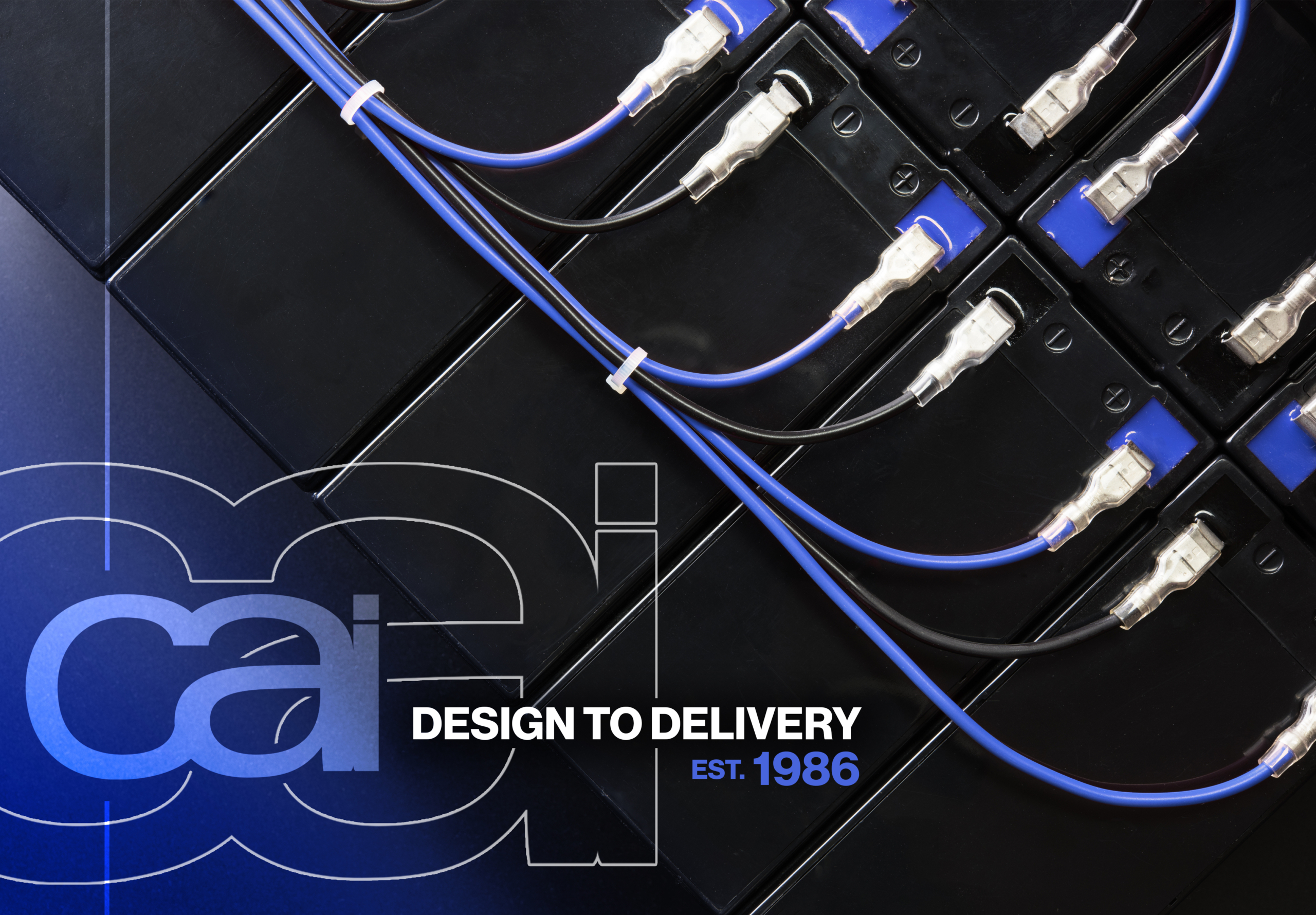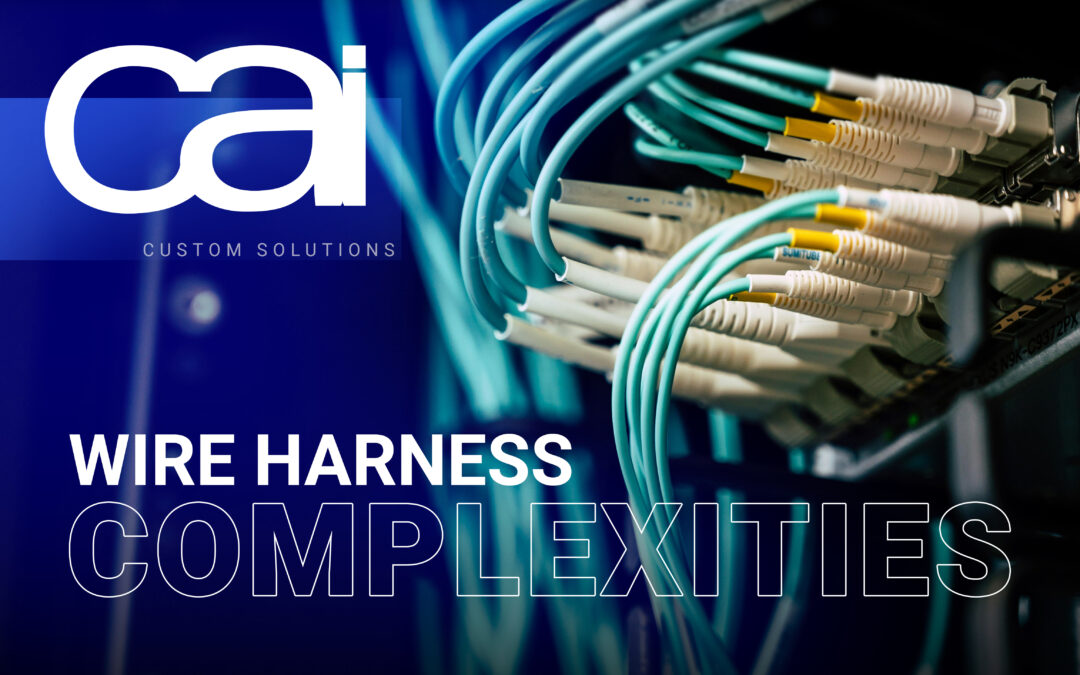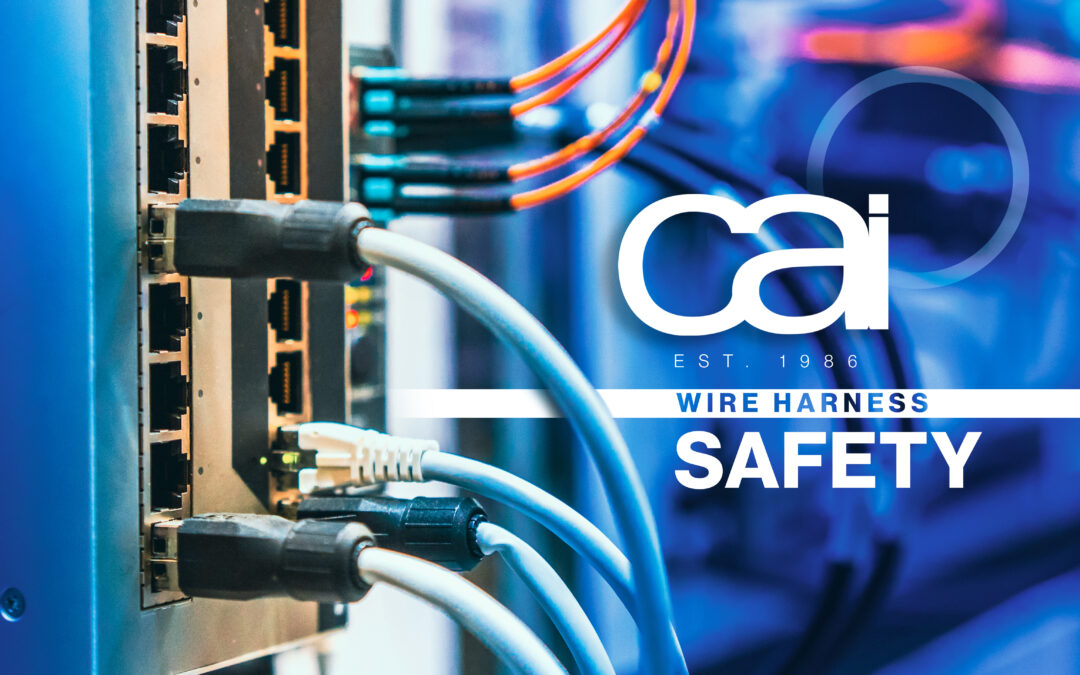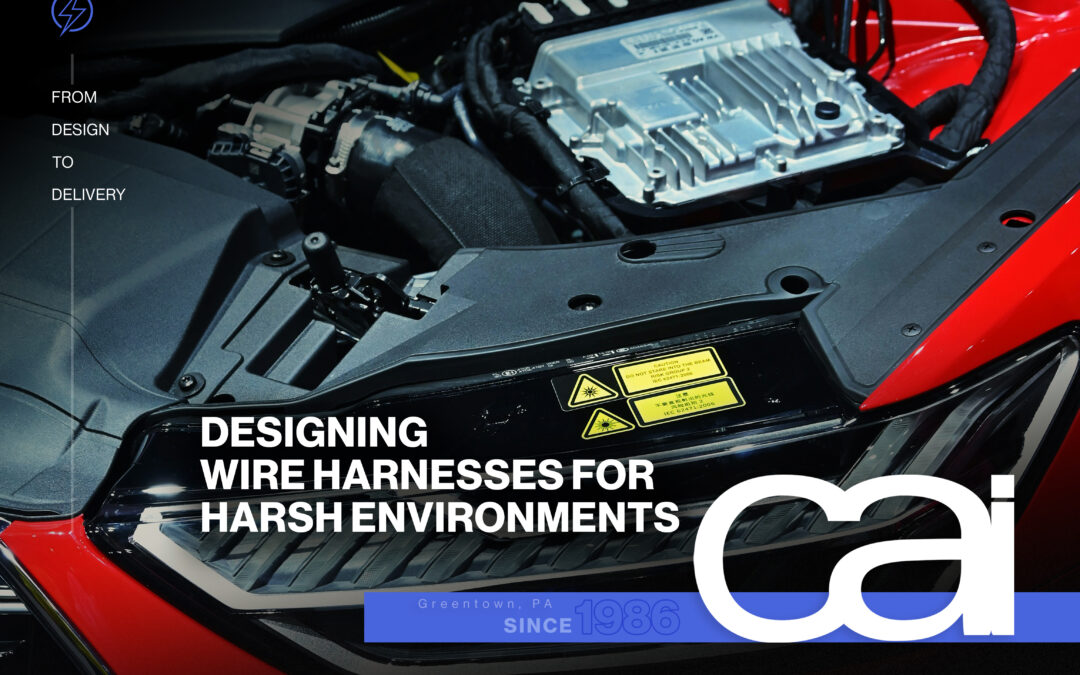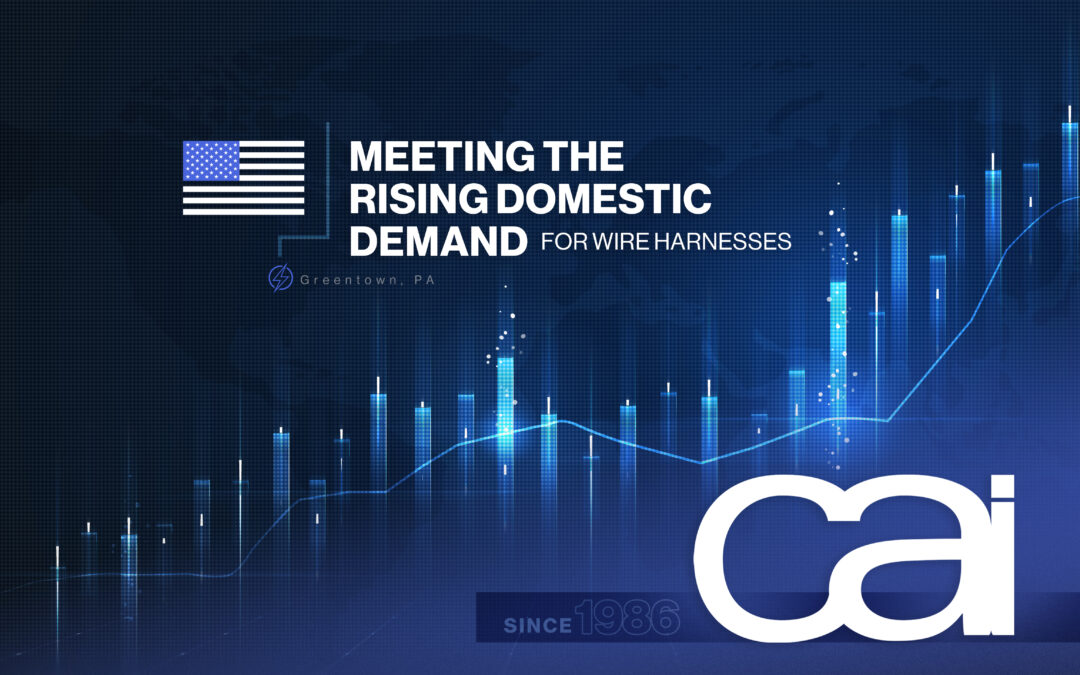Top Factors to Consider When Requesting a Cable Assembly Quote
Building a high-quality, highly reliable electrical component such as a cable assembly takes expert craftsmanship, the right tools, and quality materials. However, having the right specifications and design from which to start is equally important.
When a company seeks to outsource that work to an Original Equipment Manufacturer like CAI, it typically starts with a quoting process in which the requesting company provides information and data for CAI to begin the design review phase and work to assure the final product meets the intended application/specifications.
While you may not have everything quite figured out yet or may need some expert help choosing the best solutions, the more details you can provide during the quote stage, the quicker and more accurate the quote will be, which will lead to a more satisfying overall experience. Regardless of where you might be in the process or your level of experience, CAI embraces creativity and can work with everything from a napkin sketch to a 3D rendering. Connect with us or request a fast, accurate quote today!
Expectations & Application
Getting a firm grasp of the cable assembly’s intended application and what you are expecting is key to CAI providing an optimal solution and more seamless process.
In your quote, do your best to explain:
-
- What your project’s objective is
- What the cable assembly will be asked to do
- What industry it will be used for
- Where it will be used
- What conditions it will have to endure
- If it’s a new or existing design
- What are the projected/estimated unit requirements in the months-years ahead
- What regulations it must adhere to
- What timeline you’re expecting
- What First Article Inspection data is needed
- If there are any supply chain constraints
Drawing Information
One of the most important ways to get an accurate quote is by providing a detailed two-dimensional drawing or 3D CAD file for 3D printing. Cable assembly drawings typically include a lot of the information the manufacturer will need. If you have no drawing, here is the basic information you’ll need to provide so that a preliminary design/drawing can be made:
-
- Electrical schematic (including pinouts)
- Overall length (breakout lengths and locations)
- Tolerances
- Dimensions
- Testing requirements
Conductors
At the center of each electrical wire, and each individual wire within a cable, is a conductor which is the electrical highway for carrying power or data from one point to another. Conductors are typically made of metals due to their ability to effectively conduct electricity. However, different metals feature different properties and conductivity levels, and certain coatings can even be applied to enhance performance. This gives manufacturers a variety of options when crafting an electrical system to perform optimally in its intended application and environment.
-
- Conductor type (e.g. copper, aluminum, steel, high-strength alloys)
- Wire size (gauge/AWG, circular mils, Mm2)
- Construction type (single/solid or stranded)
- Conductor coating (bare copper, tin-coated, silver-coated, nickel-coated)
Jacket
The cable jacket is a typically thermoplastic or thermoset outermost layer that acts as the critical protection between the conductor and the environment. The jacket material affects temperature rating, flexibility, and overall resistance to moisture, chemicals, and other threats.
-
- Jacket material (e.g. PVC, polyurethane, CPE, neoprene)
- UL style or AWM rating
- Voltage and temperature rating
- Jacket color
Shielding
Cable shielding is protective conductive sheathing wrapped around jacketed wires to act as a barrier between the conductor and outside interference. Shielding protects the internal signal and the outside environment from each other.
-
- Conductor shielding material (e.g. foil, braided, foil/braided combo, spiral)
- Connector shielding specs (insertion loss and return loss, impedance, contact resistance, maximum electrical ratings)
- Conductive housings
Connectors
A cable’s connector is a metal and plastic interconnect that allows the wire’s internal copper conductor to be properly mated with the other parts of the assembly. Connectors range in cost and complexity, so it’s best to properly match the application with your connector scheme. Many connectors have less expensive equivalent/sub options.
-
- Manufacturer’s P/N
- Connector type/gender
- Connector orientation
- Locking and polarization
- Overmolded strain relief
Overmolding
Aimed at enhancing the durability and/or customization of your cable assembly, custom overmolding uses specialized injection-molding machines to mold plastic or rubber over cable assemblies and their connectors. The overmolded cable assemblies created at CAI can be customized with colors, logos, and safety information and protect your harnesses from heat, friction, moisture, abrasion, compression, and more.
-
- Material requirements (e.g. PVC, TPE/TPU, Polypropylene)
- Color requirements
- Branding elements
- Dimensional information
- Specialty requirements
Testing Requirements
Depending on a cable assembly’s intended use and future environmental conditions, there are many mechanical, environmental, and electrical testing procedures used to measure performance, durability, and safety.
CAI 100% tests all final assembly parts to specification. Tests can be performed on each cable produced or on an acceptance quality limit (AQL) sample size. Many tests require specialty fixtures, testing equipment, and the know-how to use them in order to diagnose and troubleshoot. While most cable assembly testing is applied in the final stage of the manufacturing process, some testing is done in development (i.e., strain testing), and some tests need to be performed in-process to demonstrate that a step was completed.
-
- Environmental (e.g. Ingress Protection [IP] rating, Military Standards [MIL-STD], pressurization, heat resistance)
- Mechanical testing (pull, flex/bend, vibration)
- Electrical testing (Continuity and resistance, HIPOT, Milliohm, signal integrity, insulation resistance, insertion loss)
Again, no need to worry if you don’t have every little detail decided when seeking a quote. By supplying the most important information, you’ll give your OEM a good head start on your project, and CAI is ready to roll up our sleeves and get you to production!
If you’re not exactly sure of where to start, the experts here at CAI can guide you toward the best materials, specs, and design for your project. For over 35 years, we’ve provided custom cable assembly, wire harness, and other electrical component solutions to companies big and small in just about every industry. Request a quote or start a conversation with us today!
